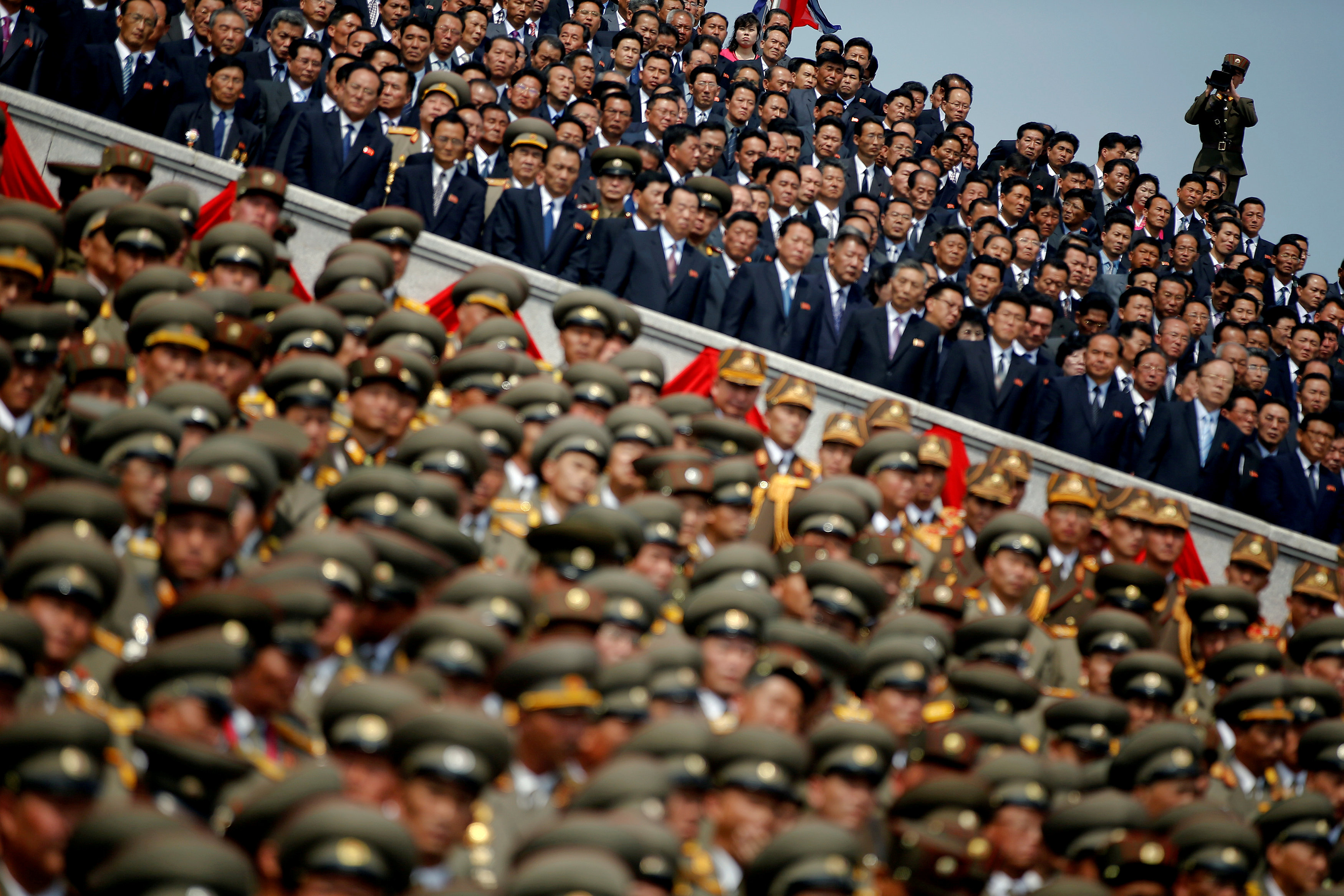
By Ju-min Park and Phil Stewart
SEOUL/WASHINGTON (Reuters) – North Korea said on Monday it successfully tested what it called an intermediate-range ballistic missile, which met all technical requirements and could now be mass-produced, although U.S. officials and experts questioned the extent of its progress.
The United States, which has condemned repeated North Korean missile launches, said Sunday’s launch of what North Korea dubbed the Pukguksong-2 was of a “medium-range” missile, and U.S.-based experts doubted the reliability of the relatively new solid-fuel type after so few tests.
U.S. officials, who spoke on condition of anonymity, said the test did not demonstrate a new capability, or one that could threaten the United States directly. But the test was North Korea’s second in a week and South Korea’s new liberal government said it dashed its hopes for peace.
U.S. officials have been far less sanguine about the test of a long-range KN-17, or Hwasong-12, missile just over a week ago, which U.S. officials believe survived re-entry to some degree.
North Korea said that launch tested the capability to carry a “large-size heavy nuclear warhead” and put the U.S. mainland within “sighting range.”
Western experts say that test did appear to have advanced North Korea’s aim of developing an intercontinental ballistic missile capable of reaching the U.S. mainland, even if it is still some way off from achieving that capability.
The U.N. Security Council is due to meet on Tuesday behind closed doors to discuss the latest test, which defies Security Council resolutions and sanctions. The meeting was called at the request of the United States, Japan and South Korea.
Washington has been trying to persuade China to agree to new sanctions on North Korea, which has conducted dozens of missile firings and tested two nuclear bombs since the start of last year.
U.S. President Donald Trump has warned that a “major, major conflict” with North Korea is possible over its weapons programs, although U.S. officials say tougher sanctions, not military force, are the preferred option.
North Korea’s state news agency, KCNA, said the latest missile test was supervised by leader Kim Jong Un and verified the reliability of Pukguksong-2’s solid-fuel engine, stage separation and late-stage guidance for a nuclear warhead. It said data was recorded by a device mounted on the warhead.
‘PRIDE’
“Saying with pride that the missile’s rate of hits is very accurate and Pukguksong-2 is a successful strategic weapon, he (Kim) approved the deployment of this weapon system for action,” KCNA said.
“Now that its tactical and technical data met the requirements of the Party, this type of missile should be rapidly mass-produced in a serial way … he said.”
KCNA said Kim was able to view the Earth from a camera mounted on the missile. “Supreme leader Kim Jong Un said it feels grand to look at the Earth from the rocket we launched and the entire world looks so beautiful,” KCNA said.
South Korea’s military said the missile flew about 500 km (310 miles), reaching an altitude of 560 km (350 miles).
The South’s military said the test would have provided more “meaningful data” for North Korea’s missile program, but further analysis was needed to determine whether Pyongyang had mastered the technology needed to stop the warhead burning up on re-entering the Earth’s atmosphere.
U.S.-based experts said it would have a maximum range of about 1,500 km (930 miles) and questioned North Korea’s assertion that the reliability of the solid-fuel missile had been proven, given limited testing.
“Entering mass production this early in the development phase is risky, but perhaps a risk North Korea feels comfortable managing,” said Michael Elleman of the International Institute for Strategic Studies.
Jeffrey Lewis, of the California-based Middlebury Institute of International Studies, said North Korea would probably continue to test the missile after deployment, fixing flaws as they emerged.
The use of solid fuel presents advantages for weapons because it is more stable and can be transported easily allowing for a launch at very short notice from mobile launchers.
Developing longer-range solid fuel missiles was a highly complicated and would “take time, lots of it,” Elleman said, but North Korea’s solid fuel missiles pose a threat to South Korea and Japan and the tens of thousands of U.S. troops based in both countries.
On Sunday U.S. Secretary of State Rex Tillerson termed North Korea’s missile testing “disappointing, disturbing” and said economic and diplomatic pressure would continue.
Japan’s chief Cabinet secretary, Yoshihide Suga, said on Monday it was important to cut North Korea’s foreign currency earnings and to block shipments and technology transfers that aid North Korea’s nuclear missile development.
China repeated its call for all parties to exercise restraint and not let tension mount further.
On Monday, South Korea’s Unification Ministry spokesman Lee Duk-haeng said while Seoul would respond firmly to any North Korean “provocations”, “it would not be desirable to have ties between the South and the North severed.”
(Additional reporting by Kaori Kaneko in Tokyo, Ben Blanchard in Beijing and David Brunnstrom and Matt Spetalnick in Washington; Editing by Nick Macfie and Peter Cooney)









